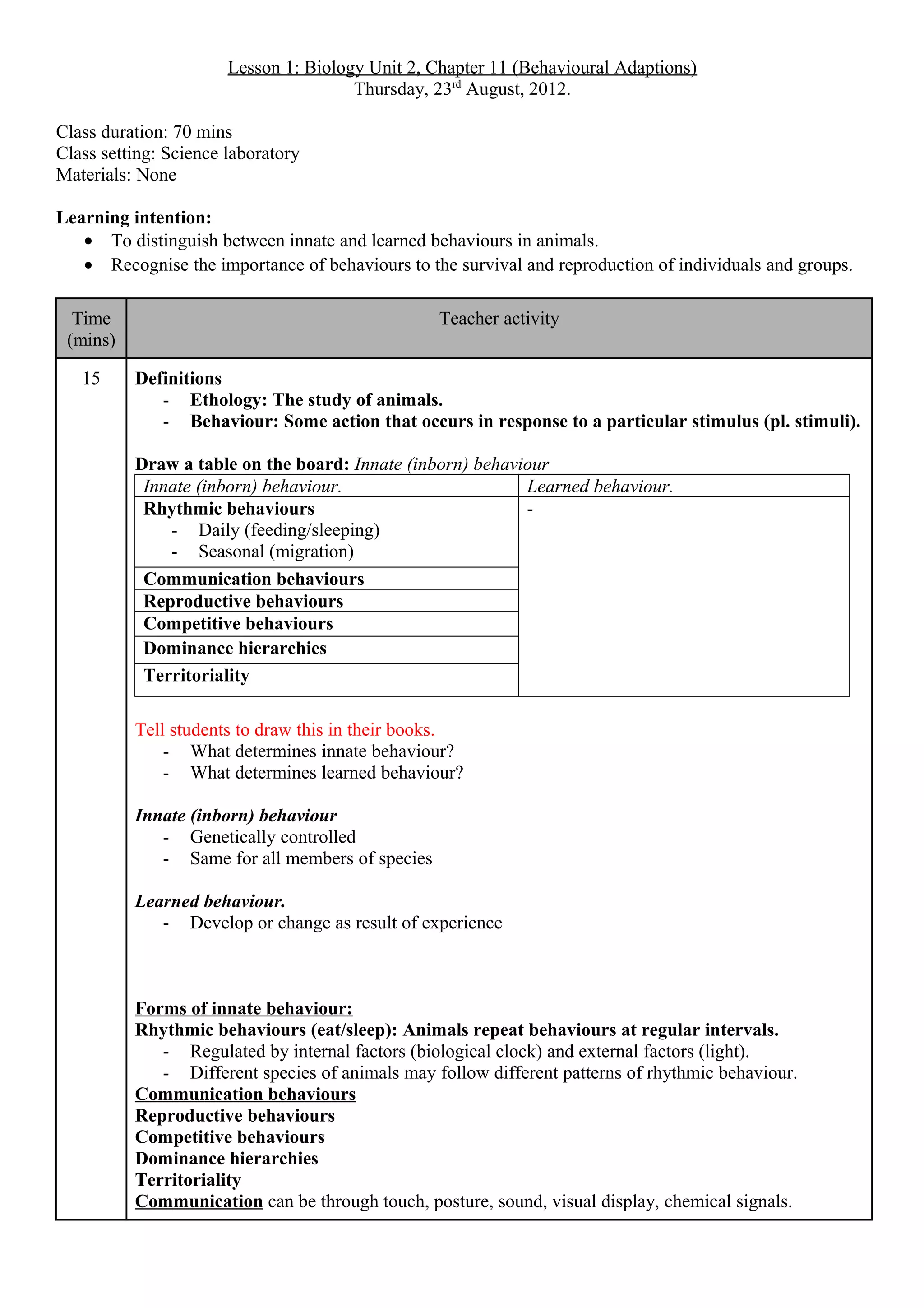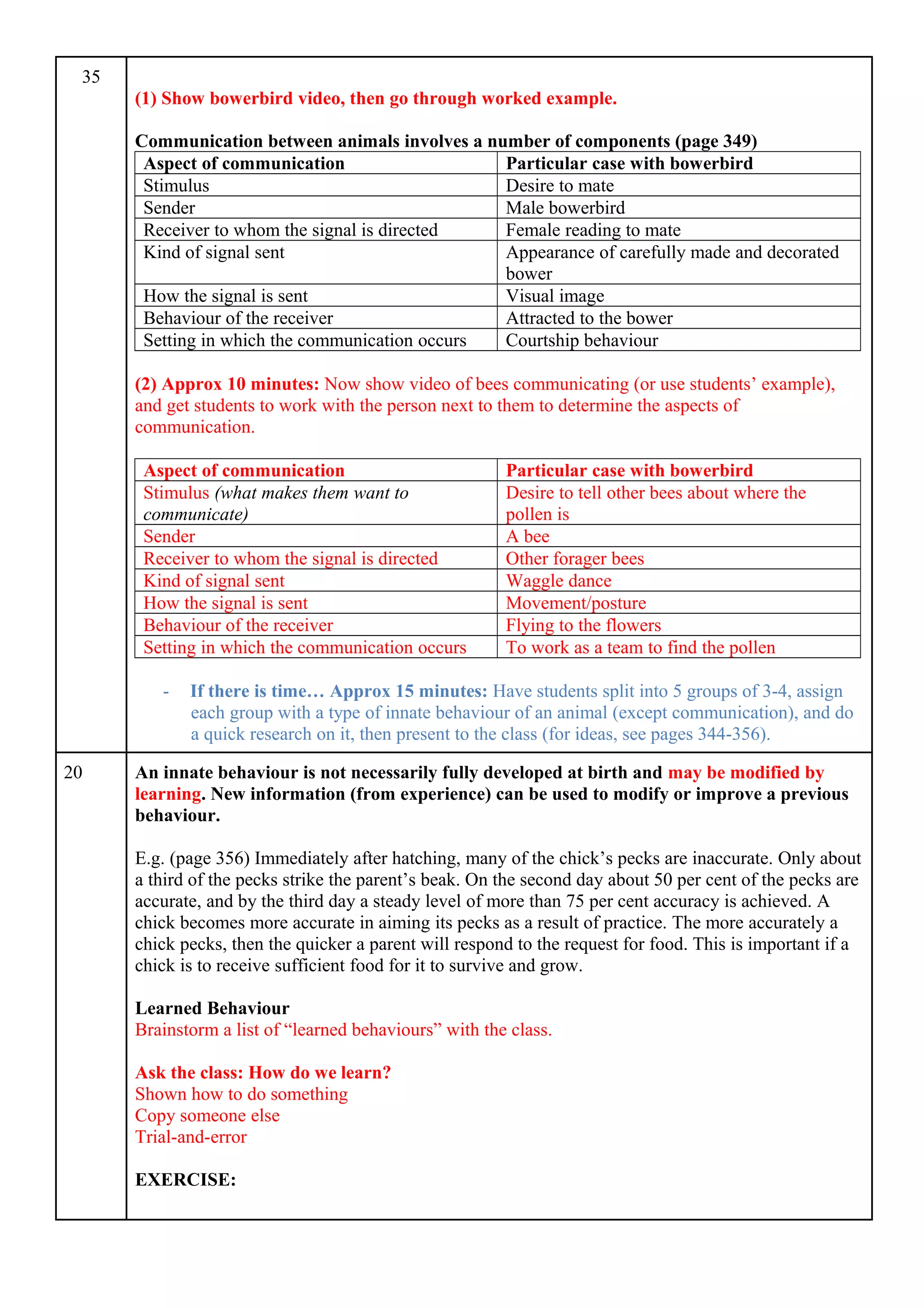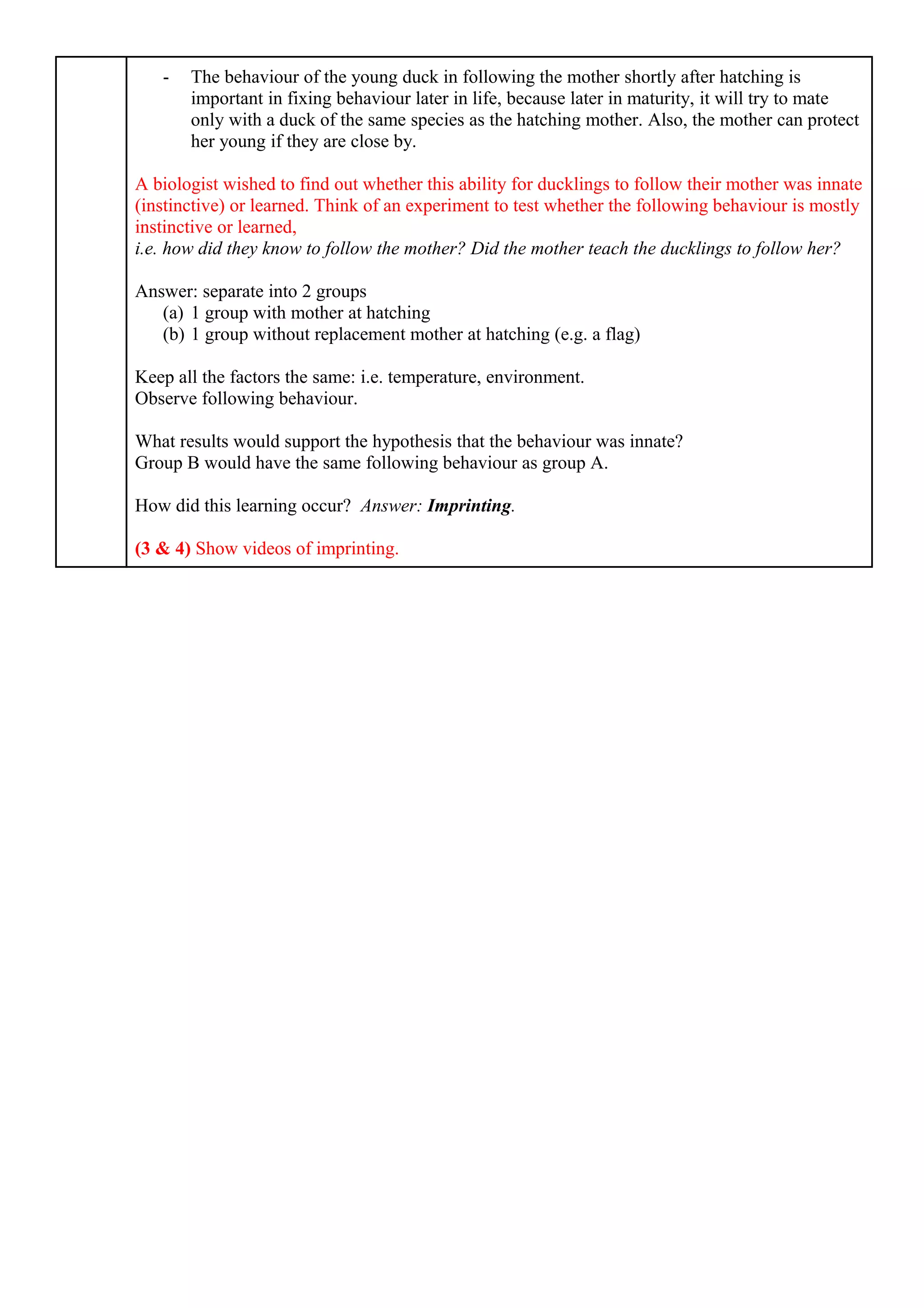This document provides a summary of a biology lesson on behavioral adaptations. The 70 minute lesson was held in a science laboratory and aimed to distinguish between innate and learned behaviors in animals. The teacher began with definitions and examples of innate behaviors like rhythmic, communication, reproductive, competitive, and territorial behaviors. Examples of learned behavior were also provided. Videos were then shown to illustrate communication behaviors in bowerbirds and bees. Students worked in groups to research different innate animal behaviors. The lesson concluded with a discussion of how behaviors can be modified by learning and an experiment was proposed to test if a duckling's following behavior was innate or learned.


